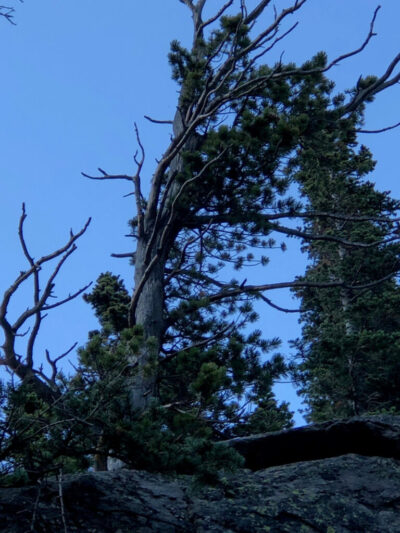
I love autumn and the scent, color, taste, touch, and sounds of the season. It brings a heightened sense of being more fully alive. But the shimmering ecstasy only lasts but a brief period of time before the glorious leaves, for example, are swept off the branches in a mighty wind or in the rhythmic cycle of approaching winter.

We come to expect that natural departure every fall but sometimes it’s more than deciduous leaves that are affected by stiff wind and weather. Sometimes the impact of adversity goes deeper into the very grain of the wood.

It’s that way with our human lives as well. Consider the expected and unexpected fluctuations in a lifetime, the collective rhythms of living, and you’re bound to find places of rejoicing as well as suffering running deep in the wellspring of the heart.
Why is it, I wondered, that a hard wind can demolish some and fortify others?
One of my sons recently shared sentiments from the poet Douglas Malloch:
Good timber does not grow with ease,
The stronger wind, the stronger trees—Douglas Malloch, “Good Timber”

In the spirit of finding good timber, I found myself engulfed in the beautiful October regalia of Rocky Mountain National Park where I hiked to the ridge tops in search of resilient trees growing in extreme conditions under the forces of exposure and desiccation. Wind, sleet, snow, rain, lightening, and plummeting temperatures are the norm for these trees. Maybe, just maybe, I thought to myself, I could learn something.

Some peculiar looking timber grows at those higher elevations. Wind is so severe in places that trees actually grow sideways clinging to the hillside for dear life. But prevail they do.


In fact, the wood on some trees actually grows in spirals that give the trunks a whirling appearance. Those spirals can be left-sided, right-sided, or a combination of both on the same tree.

Scientists can’t seem to agree on why the exposed spirals twist helix to helix from one end to the other. Some propose a theory that spiral growth patterns allow for greater flexibility and more resistance to high winds and heavy snow.

Others believe that spiral patterns distribute water and nutrients more evenly for the tree’s survival during periods of high environmental stress. Still others conclude genetics, heliotropism (tracking the sun), and the Coriolis Effect (clockwise patterns in wind and ocean currents in the northern hemisphere, and torque from prevailing winds) address the mysteries of the spiraling patterns. In short, the experts don’t really know for certain.
Scientific theories aside, I stood in awe of those trees buffeted by wind on the high ground. I started thinking of people in my life (young and old) touched by the difficult winds of illness, disappointment, pain, loneliness, tragedy, and perhaps the sorrow of departure. Their journeys to navigate such trials often reflect courage and dignity. And I cherish the words of a holy man I know who claims all hardship is a grace in the journey to grace.

In some mysterious way, those gnarled and barren windswept trees at the top of the ridge symbolized a profound inner strength and encouragement to me. As I clicked my camera, I sensed a wisdom in the sweet juices of the trees’ life-resins, and something like contentment in the hidden layers of their convoluted trunks. I pause to reflect on the sacred wood through the ages, the tree of life in Eden, the tree of Christ’s cross at Golgotha. There’s something infinitely beautiful in the fiber of creation, the fiber of redemption. I conclude that all life is precious.
I hope you enjoy the poem “October” by Robert Frost in its entirety below. It conveys a longing to savor the ripened leaves and the sweet fruits of living. A sentiment worth holding dear in any season of life.
October
O hushed October morning mild,/
Thy leaves have ripened to the fall;/
Tomorrow’s wind, if it be wild,/
Should waste them all./
The crows above the forest call;/
Tomorrow they may form and go./
O hushed October morning mild,/
Begin the hours of this day slow./
Make the day seem to us less brief./
Hearts not averse to being beguiled,/
Beguile us in the way you know./
Release one leaf at break of day;/
At noon release another leaf;/
One from our trees, one far away./
Retard the sun with gentle mist;/
Enchant the land with amethyst./
Slow, slow!/
For the grapes’ sake, if they were all,/
Whose leaves already are burnt with frost,/
Whose clustered fruit must else be lost—/
For the grapes’ sake along the wall.
—Robert Frost

Thanks for stopping by. ♥
https:/www.savetheredwoods.org/author/richardcampbell/

